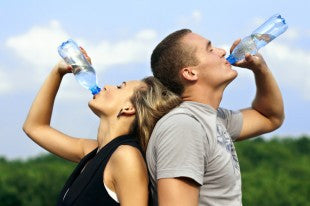Unfortunately, I had to deal with kidney stones for a second time this year. It can be a very painful experience…very painful. I can’t say from personal experience, but when women tell me its as bad as delivering a baby, I completely understand why. I would like to think that this pain can be avoided because, among other things, its a direct result of the diet you maintain. Like when people go on these high protein and light carb diets, that can spell disaster.
With that, I asked my doctor Tina Neade, a specialist in the field of kidney stone treatment, to answer a few questions to educate people about the prevalence, prevention and treatment of kidney stones:
- Why do kidney stones occur and how prevalent are they:
Kidney stones are very common. Approximately 1 in 11 people in the US will be affected by kidney stones. Kidney stones account for millions of hospital and Emergency Room visits every year. The risk factors for kidney stones are 1) family or personal history of kidney stones- in other words, genetics, 2) low fluid intake/dehydration, 3) male gender, 4) age over 40 years, 5) obesity or diabetes, 6) history of bowel disease or bariatric surgery, 7) Diet.
- What are the signs and symptoms of kidney stones:
Kidney stones are basically asymptomatic when they are located within the kidneys. It is when they dislodge and travel down a long tube connecting your kidney to your bladder called a ureter, that they create pain. This is typically called renal colic and consists of pain in the back or side which may move or travel into the groin area. There is also sometimes blood visible in the urine. The pain can range from cramping, intermittent pain, to severe constant pain. Some common but less typical symptoms include nausea/vomiting, difficult or painful urination and abdominal pain. Concerning signs or symptoms while passing a kidney stone such as inability to urinate, fever/chills or inability to tolerate severity of pain should warrant seeking immediate evaluation with a physician.
- Top foods to avoid to help prevent kidney stones:
There are different types of kidney stones and your medical professional will base your diet recommendations on the type of stone you form and any additional information that is gathered from your metabolic evaluation. In general, you will want to limit your dietary protein intake, especially the intake of animal proteins like meats, chicken and fish. This should be limited to 6-8 ounces per day. Organ meats such as brain, liver should be avoided, as should shellfish such as shrimp, mussels and scallops. Oxalate is another important component of stones and intake of oxlate should be limited if you are prone to calcium oxalate stones. This is found in dark greens such as kale and spinach, as well as nuts and soy products. High salt intake is another risk for kidney stones and keeping your sodium intake to less than 3500 mg per day will be important. Sodium is hidden in many pre-prepared, packaged and frozen foods. Eating out and take out are also sources of high sodium intake. Also be sure to discuss any dietary supplements you may be taking, such as high dose Vitamin C, Calcium, Vitamin D etc.
- Top foods to protect against kidney stones:
- Water
- Water
- Water
Increasing your fluid intake is the most important tool to avoid stone formation in the future. Drink at least 60 ounces or more of fluid in a day. In addition to increasing your fluid intake, natural citrus juice, such as diluted lemon juice can help protect from certain types of stones. Finally, despite what you might think, you do not want to eliminate calcium from your diet, even if you form calcium stones. Continue to get the normal recommended calcium in your diet.
Kidney stones can be prevented and often there are risk factors for kidney stones which can be modified with the right diet or medication. If you have had issues with kidney stones, discuss with your doctor regarding referral to a Nephrologist or Urologist who can provide a metabolic evaluation including a 24 hour urine collection to assess for common risk factors.


